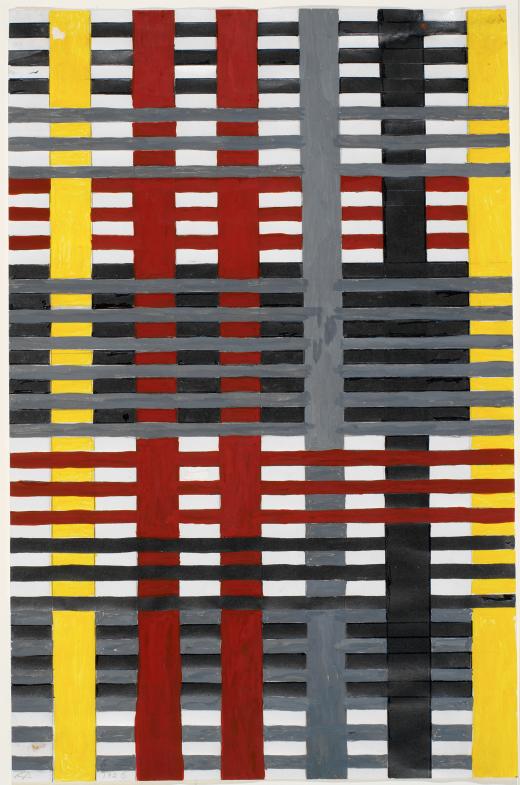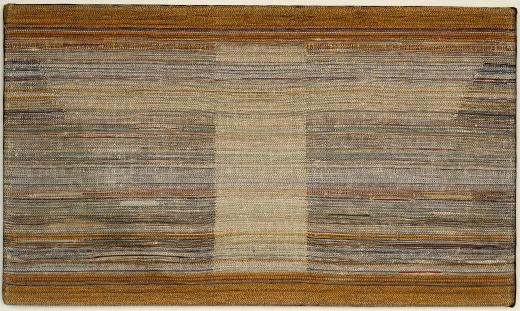FORM-PRODUCTION AND EXPERIMENTATION
In 1922, Anni Albers joined the Bauhaus school of Weimar, an avant-garde institution where she would also meet her husband, the painter Josef Albers. A hard-working student and gifted weaver, she went on to assist professor Gunta Stölzl and served as acting director of the weaving workshop several times between 1929 and 1931. When the Bauhaus was closed by the Nazi party in 1933, Albers and her husband moved to North Carolina, USA, where they both took over as teachers at a recently-created free school named Black Mountain College, which was to become a landmark for North American modernism.
This section shows work from both periods, during which Albers’s creative thinking underwent a decisive development. The present selection of Bauhaus works includes preparatory drawings for textiles (some of them executed or replicated decades later, or even posthumously) as well as numerous examples of her research into simple, functional textiles. In the meantime, the pieces created during the 1940s show the liberating effect of experimentation within the artistic community at Black Mountain, where previous rationalist conceptions welcomed an unexpected, intuitive lyricism. It was during this decade that Albers coined the term “pictorial weaving” to refer to the tapestries she hand-wove on the loom. On the formal level, it can be observed how the predominantly orthogonal patterns of her beginnings transitioned toward freer motifs and a direct dialogue between texture and color, sometimes evoking spiritual visions or imaginary landscapes. The selection of works from this period is complemented by selected works announcing Albers’s development in the early 1950s, and a section that documents her inspiring journeys to Latin America with Josef, including ancient textiles acquired then and kept in their personal collection.




